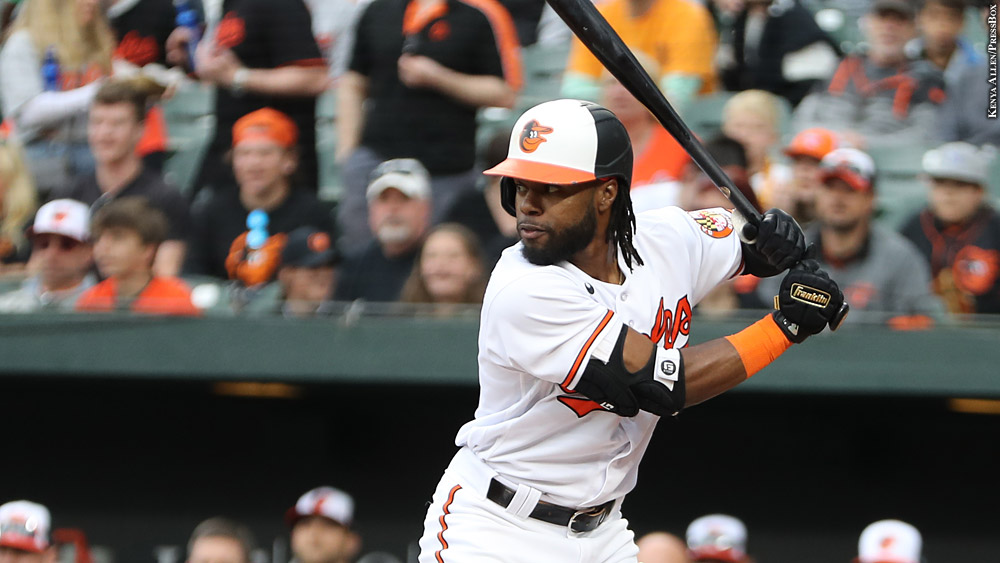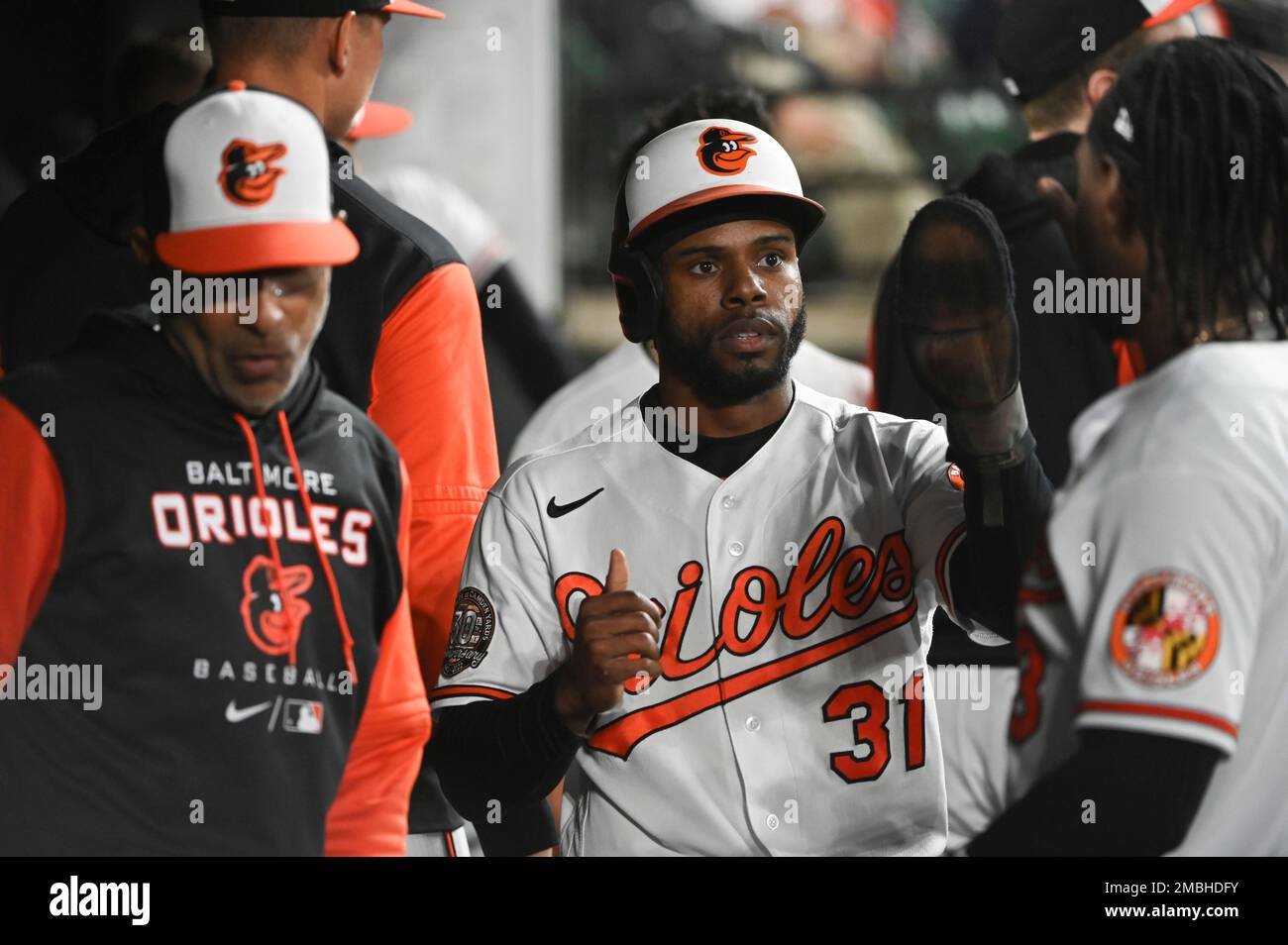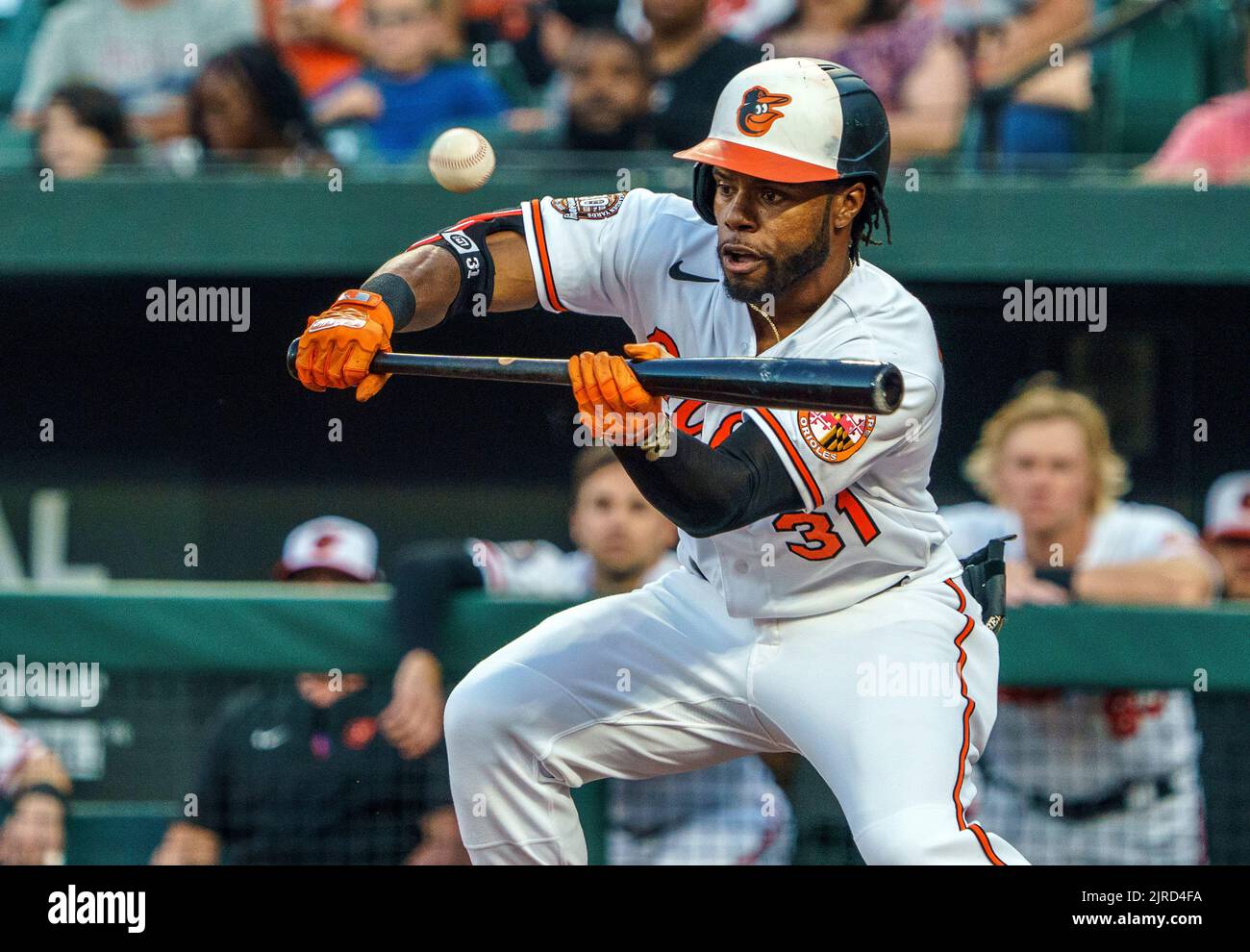Who Did The Orioles Get For Cedric Mullins? Unpacking The Recent Trade
The baseball trade deadline often brings a flurry of activity, and this past period was certainly no different. Fans of teams across the league, so, typically keep a very close watch on the news, hoping to see their favorite clubs make moves that could truly shape the season's outcome or, indeed, the team's future. One particular transaction that captured quite a bit of attention involved a well-known center fielder moving from one American League East team to a National League East club.
Reports from various sources, including ESPN, made it clear that the New York Mets were working on a deal to bring in Cedric Mullins. This acquisition meant a change of scenery for the Baltimore Orioles veteran. It was, as a matter of fact, a significant piece of news that spread quickly through the baseball world, especially since the Mets appeared to be quite serious about improving their roster at that time.
So, with Mullins heading to the Big Apple, a big question naturally came up for Orioles supporters and those who follow team developments: What did Baltimore receive in return? The information that emerged about the Orioles' compensation was pretty specific in one key area. It indicated that the Baltimore club would reportedly gain a particular kind of asset for their player, which is, you know, a common way teams rebuild or strengthen their farm system.
Table of Contents
- Understanding the Cedric Mullins Trade
- What the Orioles Reportedly Received
- Why This Trade Matters for Both Teams
- Frequently Asked Questions About the Mullins Trade
Understanding the Cedric Mullins Trade
The movement of players around the league, especially as the trade deadline approaches, is a very interesting part of baseball. Teams look to either add pieces to help them win right away or, sometimes, they move players to gather assets for the future. The deal involving Cedric Mullins was, in a way, one of those moments that really got people talking, particularly because of the kind of player Mullins is and the timing of the whole thing.
The Mets, as confirmed by various reports, were finalizing a deal to acquire him. This meant a significant change for the Baltimore Orioles, who had Mullins as their center fielder. It was a trade that seemed to come together pretty quickly, with sources like ESPN confirming the details as they unfolded. This kind of quick movement is typical when teams are trying to get deals done just before the official deadline passes.
The Mets' Need for an Outfielder
For the New York Mets, this particular acquisition filled what they apparently saw as a real need. They were, it seems, looking for an upgrade in their center field position. This kind of move is quite common for teams that feel they are just a piece or two away from being more competitive. So, bringing in a player like Cedric Mullins, who has experience and skills, made a lot of sense for them in that situation, you know.
The Mets, according to reports, were quite active in adding to their collection of outfielders. Acquiring a veteran player like Mullins just hours before the Major League Baseball trade deadline suggests a pretty clear intention to strengthen their lineup right away. It's that kind of urgent action that can really make a difference for a team looking to push for success in the current season, or so it seems.
The Timing of the Deal
The trade for Cedric Mullins happened, as reports from MLB.com noted, very close to the trade deadline. Specifically, it was about two hours before the deadline for Major League Baseball. This timing is, in some respects, quite telling. It suggests that both teams were working right down to the wire to get this deal completed, which is, you know, often the case with these kinds of transactions.
The New York Mets, for their part, continued to make moves as the clock ticked down. Acquiring Cedric Mullins from the Baltimore Orioles was one of those last-minute additions that can really change the feel of a team heading into the final stretch of games. It shows a clear desire to improve the roster, perhaps, and make sure they had all the pieces they felt they needed to compete effectively.
What the Orioles Reportedly Received
When a team trades away a player like Cedric Mullins, especially a veteran who has been a significant part of their roster, the focus quickly shifts to what they get back. For the Baltimore Orioles, this trade was about bringing in assets that could help their organization in the long run. The information about their return was, in fact, quite specific in terms of the type of players they received, so it's worth noting.
The Orioles, as sources indicated, were set to receive a particular kind of compensation for their center fielder. This kind of return is often seen when a team is looking to build for the future, or perhaps when they have a strong roster already and are just trying to add depth to their talent pool. It’s a strategic move, really, that can have effects for many seasons to come.
The Prospect Package
The core of what the Orioles reportedly received in exchange for Cedric Mullins was a group of young players. Specifically, the reports stated that the Orioles would gain three prospects in the deal. This is, you know, a pretty common way for teams to acquire future talent, especially when they trade away a more established player. Getting prospects means investing in players who are still developing, but who have the potential to become key contributors down the line.
The idea of receiving prospects in a trade is, in a way, a bet on the future. These are players who are typically still in the minor leagues, working their way up through the system. So, the Orioles' decision to take on three prospects suggests a focus on adding young talent to their farm system. It's a move that could, arguably, pay off big time in the years ahead, if those players develop as hoped.
A package of three prospects means the Orioles added a significant number of young players to their organizational depth. This kind of acquisition is, quite frankly, a sign of a team looking to maintain a strong pipeline of talent. It allows them to continue developing players who could eventually make it to the major leagues and contribute to the team's success. It’s a long-term play, really, for the Baltimore club.
The acquisition of three prospects is, in some respects, a clear indication of the Orioles' strategy. They are, it seems, committed to building from within and ensuring they have a steady stream of new talent coming up through their system. This approach can be very beneficial for sustained success, as it allows a team to control its own player development and not rely solely on free agency or other trades. It’s a pretty solid plan, you know, for a team looking to stay competitive for a long time.
When a team trades a veteran for prospects, it's often about balancing immediate needs with future potential. For the Orioles, getting three prospects suggests they saw value in adding to their pool of young players, perhaps even more so than getting another established player right away. This kind of move is, basically, a vote of confidence in their scouting and player development systems, believing they can turn these young players into valuable assets down the road.
The focus on prospects also means that the Orioles are, in a way, preparing for what comes next. Baseball is a game where player cycles happen, and having a strong farm system with promising young players is absolutely key to staying competitive. So, receiving three prospects for Cedric Mullins fits into a broader strategy of maintaining a deep and talented organization, ensuring a bright outlook for the team's future, or so it seems.
This particular return of three prospects is, in short, the reported compensation for the Orioles. It highlights a common practice in baseball where teams exchange veteran talent for future potential. The number three suggests a multi-faceted return, giving the Orioles several new young players to work with and develop within their system. It’s a move that could, quite possibly, shape their roster for years to come.
Why This Trade Matters for Both Teams
Every trade, no matter how big or small, has implications for the teams involved. The Cedric Mullins deal is no exception, bringing different benefits and considerations for both the Baltimore Orioles and the New York Mets. It’s a situation where, in a way, each team addressed a specific set of needs or goals through this player movement. So, looking at it from both sides can give a fuller picture.
For the Mets, acquiring a veteran outfielder like Mullins meant adding experience and a proven performer to their lineup. This kind of addition is, typically, aimed at improving their chances in the immediate future. On the other hand, the Orioles' decision to trade Mullins for prospects speaks to a different kind of strategic thinking, one that looks further down the road for its rewards. It's a pretty interesting contrast, really.
Baltimore's Strategy
The Orioles' reported decision to receive three prospects for Cedric Mullins points to a clear organizational strategy. It suggests a focus on long-term growth and sustainability. Teams that prioritize acquiring prospects are, you know, often building a strong foundation from within, rather than relying heavily on expensive free agents or other trade acquisitions for established players. This approach can lead to a very consistent pipeline of talent.
By bringing in three young players, the Orioles are, basically, investing in their future. These prospects will now join their farm system, where they will continue to develop their skills and hopefully progress through the minor league ranks. This kind of move allows the Orioles to potentially cultivate their next generation of major league stars, which is, in fact, a vital part of any successful baseball club. Learn more about player development on our site.
This trade, therefore, aligns with a strategy that many successful teams employ: continually restocking their farm system with promising young talent. It helps ensure that even as current players move on or age, there are always new, capable players ready to step up. It's a pretty smart way to keep a team competitive over many seasons, you know, rather than just focusing on one year at a time.
The Orioles' move to acquire prospects for Mullins could also indicate a belief in their current roster's depth or a desire to clear space for other players coming up through their system. It's a balancing act, really, between competing now and planning for the future. And in this case, the reported return of three prospects definitely leans towards building for what's next, which is, in some respects, a common strategy for teams looking to maintain long-term success.
New York's Outfield Addition
For the New York Mets, bringing in Cedric Mullins was a move aimed at immediate improvement. They were, as reports confirmed, looking for an upgrade in center field. This kind of acquisition shows a team's intent to bolster its current roster for a playoff push or to solidify its position in the standings. A veteran like Mullins brings experience and a known level of performance, which can be very valuable in the stretch run of a season.
The Mets' acquisition of Mullins just before the trade deadline highlights their desire to add a proven player to their outfield group. This kind of transaction is, you know, often made by teams that feel they are close to competing for a championship and just need that extra piece to get them over the top. Mullins, as a veteran, could provide that steady presence and contribute right away to their efforts.
Adding a player of Mullins' caliber also means the Mets are, in a way, signaling their commitment to winning now. They are willing to part with prospects, which are future assets, in exchange for a player who can help them achieve their goals in the current season. This short-term focus is typical of teams that believe their window to contend is open right now, and they want to make the most of it. It’s a pretty aggressive approach, really.
The move also adds to their existing collection of outfielders, providing more depth and options for the coaching staff. Having multiple capable players means a team can better manage injuries, rest players, or make strategic substitutions during games. So, the acquisition of Mullins, as confirmed by various sources, gave the Mets a more robust outfield group, which is, basically, always a good thing for a team aiming for success.
Frequently Asked Questions About the Mullins Trade
When a player like Cedric Mullins changes teams, a lot of questions naturally come up. People want to know the details, the reasons, and what it means for everyone involved. Here are a few common questions that might come to mind about this particular trade, you know, based on what we've seen reported.
1. Who did the Orioles get for Cedric Mullins?
The Baltimore Orioles reportedly received three prospects in exchange for center fielder Cedric Mullins. This return, as sources indicated, means the Orioles added young talent to their farm system. It's a clear move towards building for the future, so it seems, by bringing in developing players who could contribute down the line. We can certainly say that.
2. Why did the Mets acquire Cedric Mullins?
The New York Mets acquired Cedric Mullins because they were reportedly in need of an upgrade in center field. They added him to their collection of outfielders just hours before the Major League Baseball trade deadline. This suggests a desire to strengthen their roster for immediate competition, which is, you know, a common

Orioles Notebook: Dean Kremer Finds Footing, Cedric Mullins Keeps

Baltimore Orioles' Cedric Mullins (31) celebrates with teammates in the

BALTIMORE, MD - AUGUST 23: Baltimore Orioles center fielder Cedric